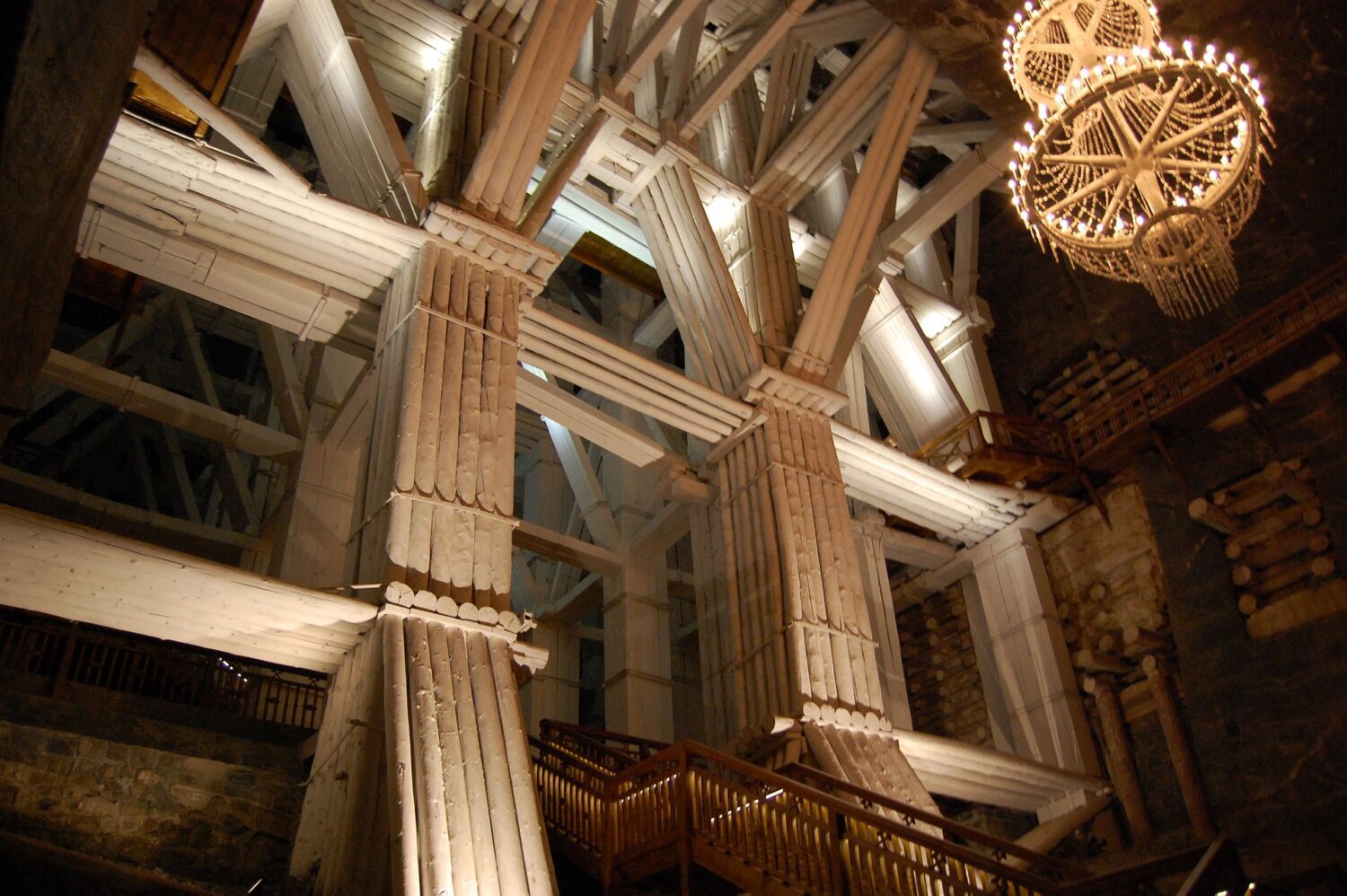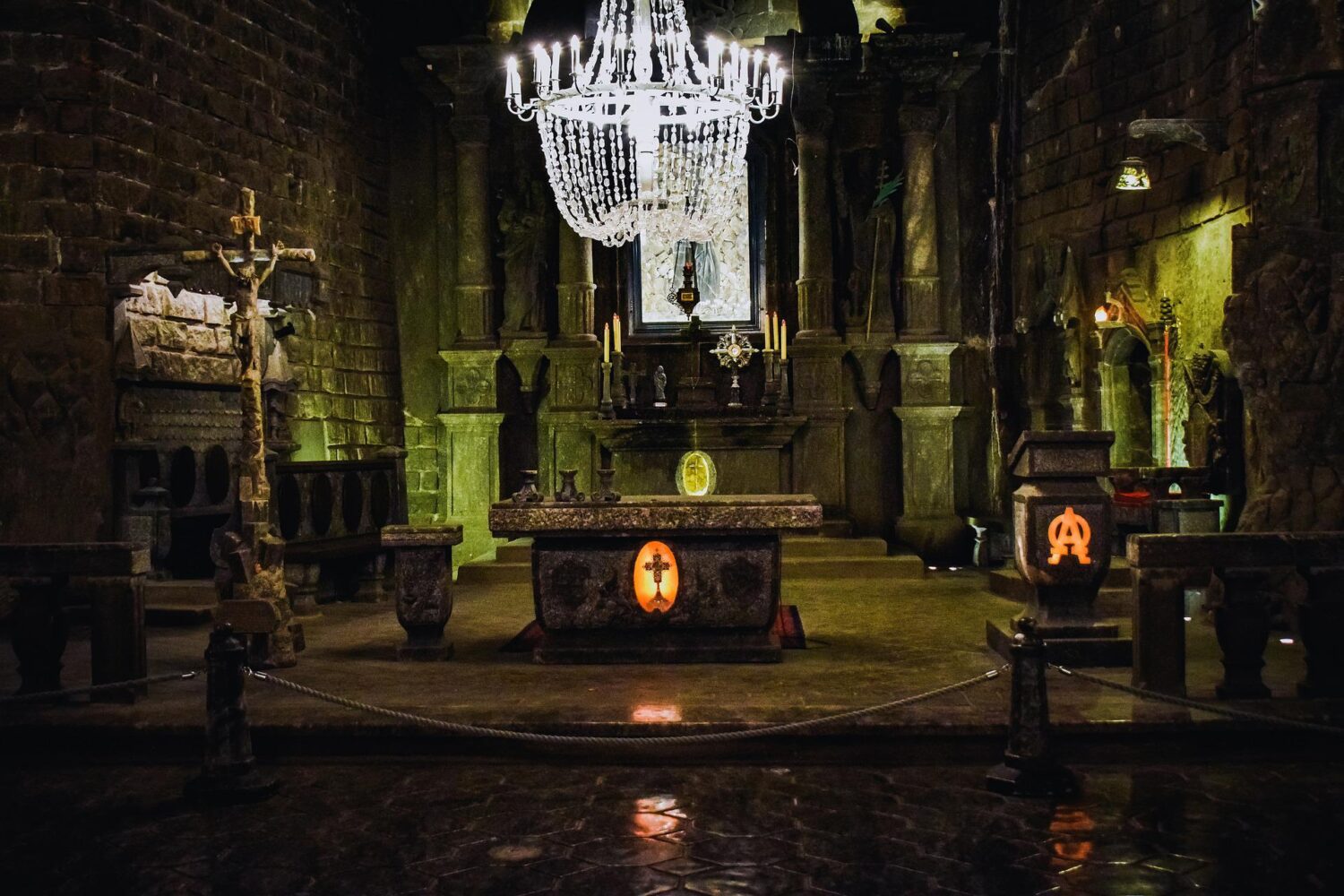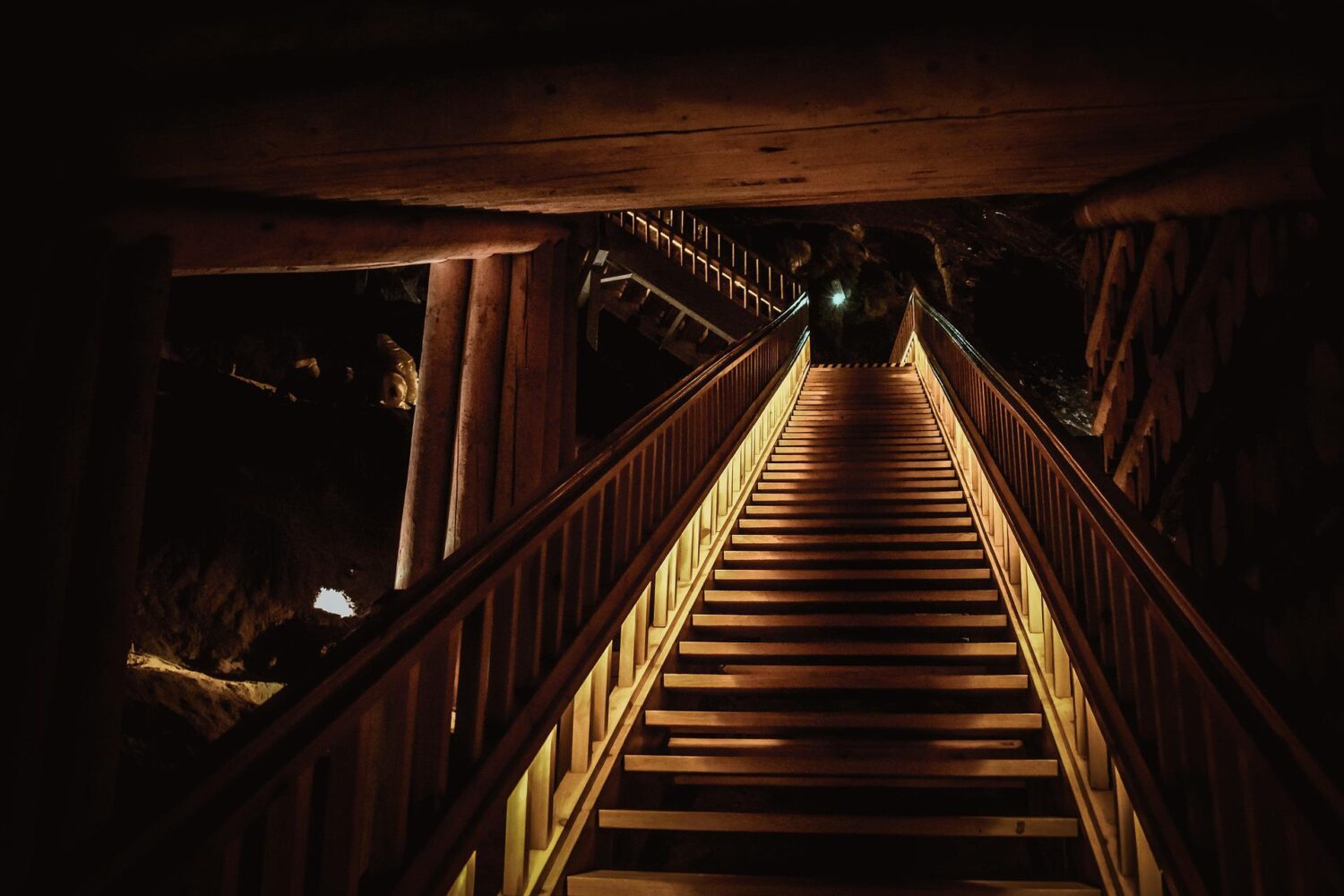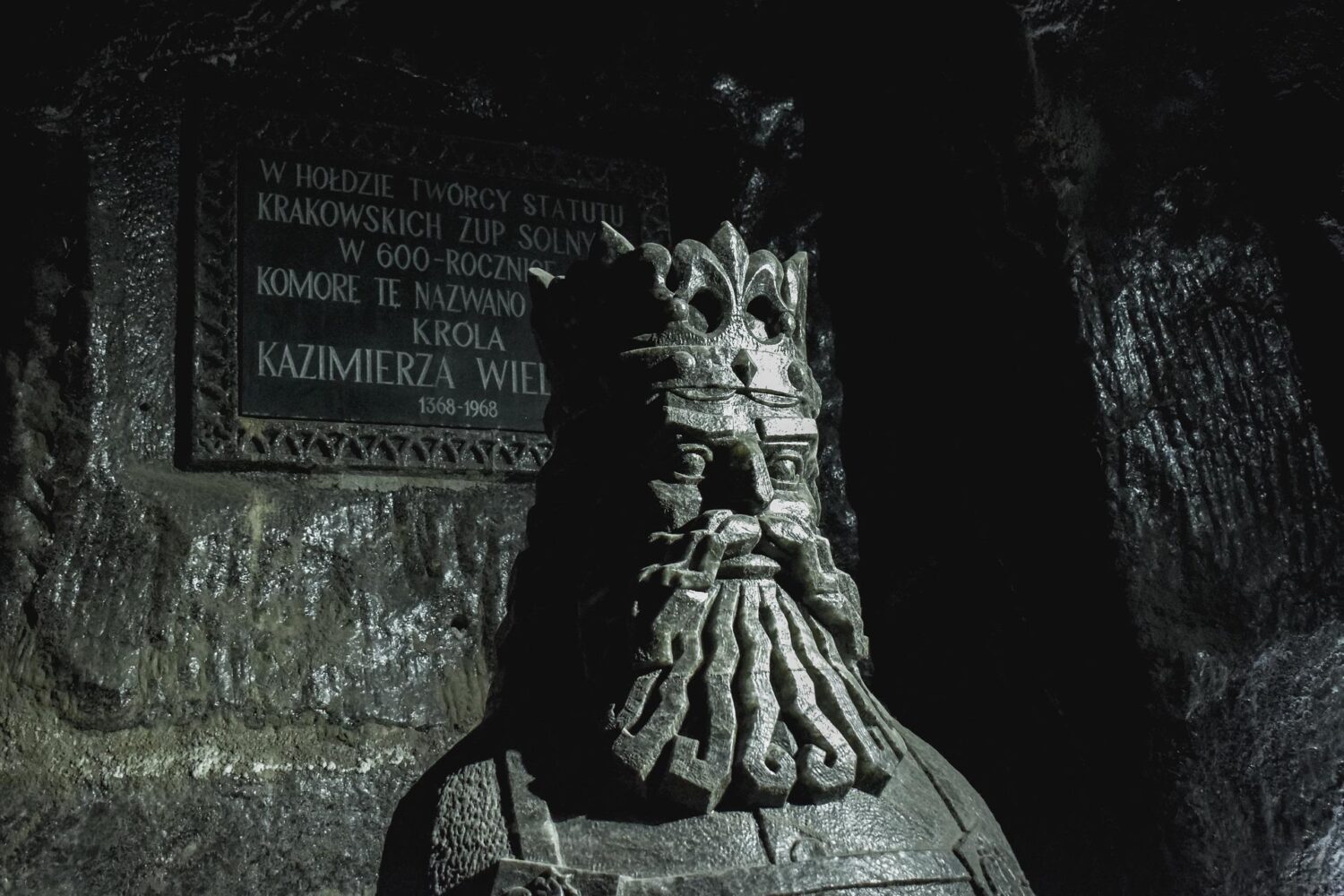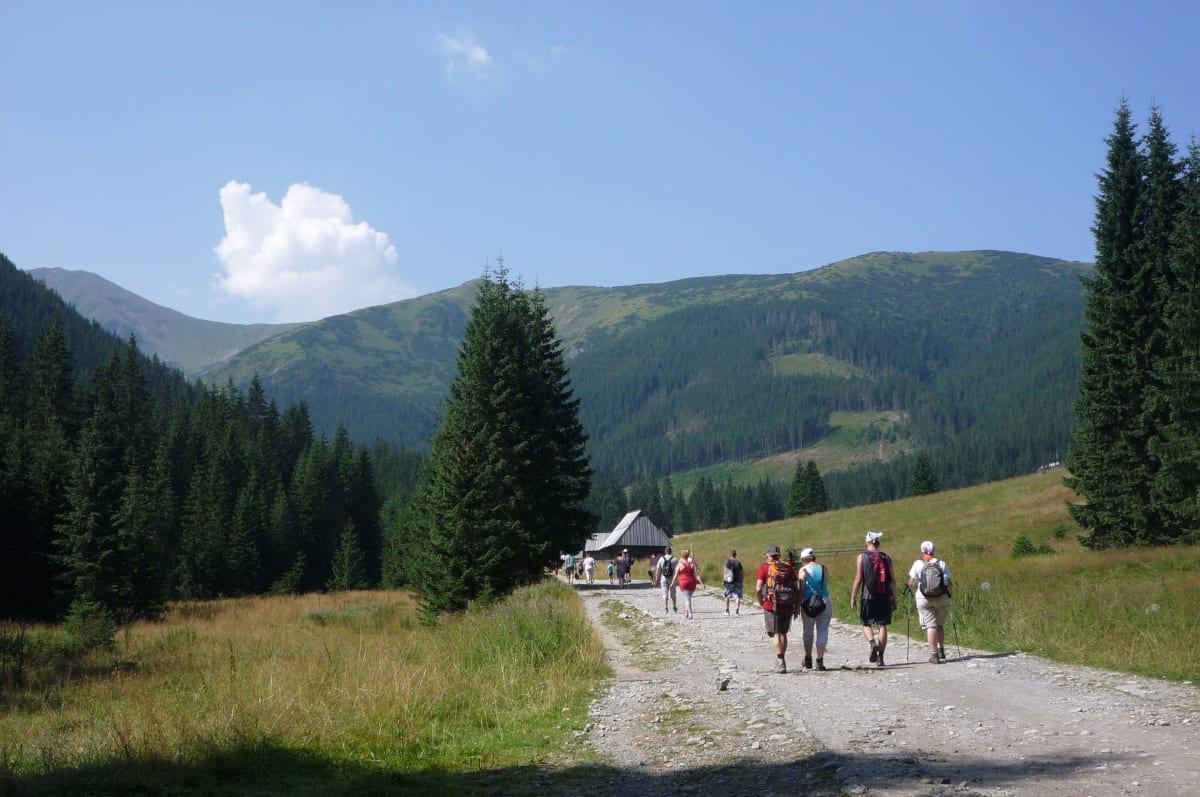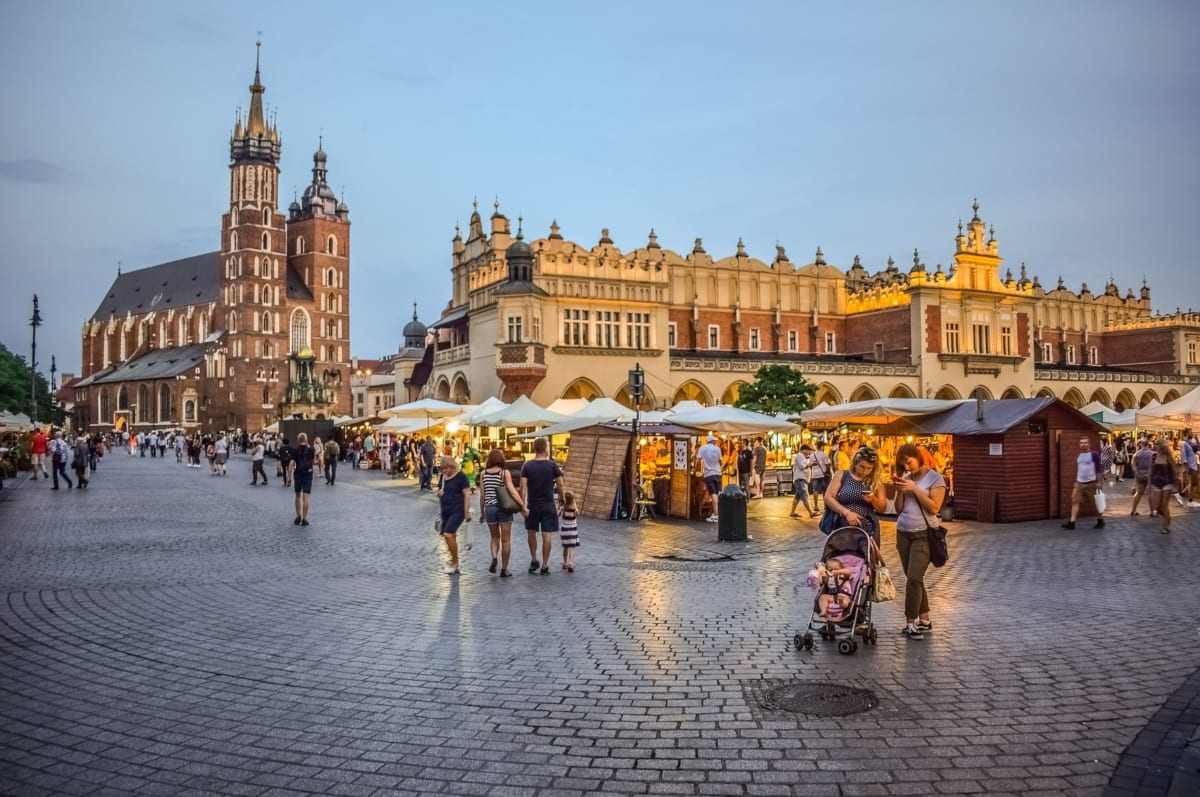Top 10 things to do in Krakow
What to see, what to do
Things to do – updated 17 January 2023.
There’s a lot to see and do in the city. Here’s our list of the Top 10 things to do in Krakow. Click on the links for further information or to book a tour.
1. Wieliczka Salt Mine
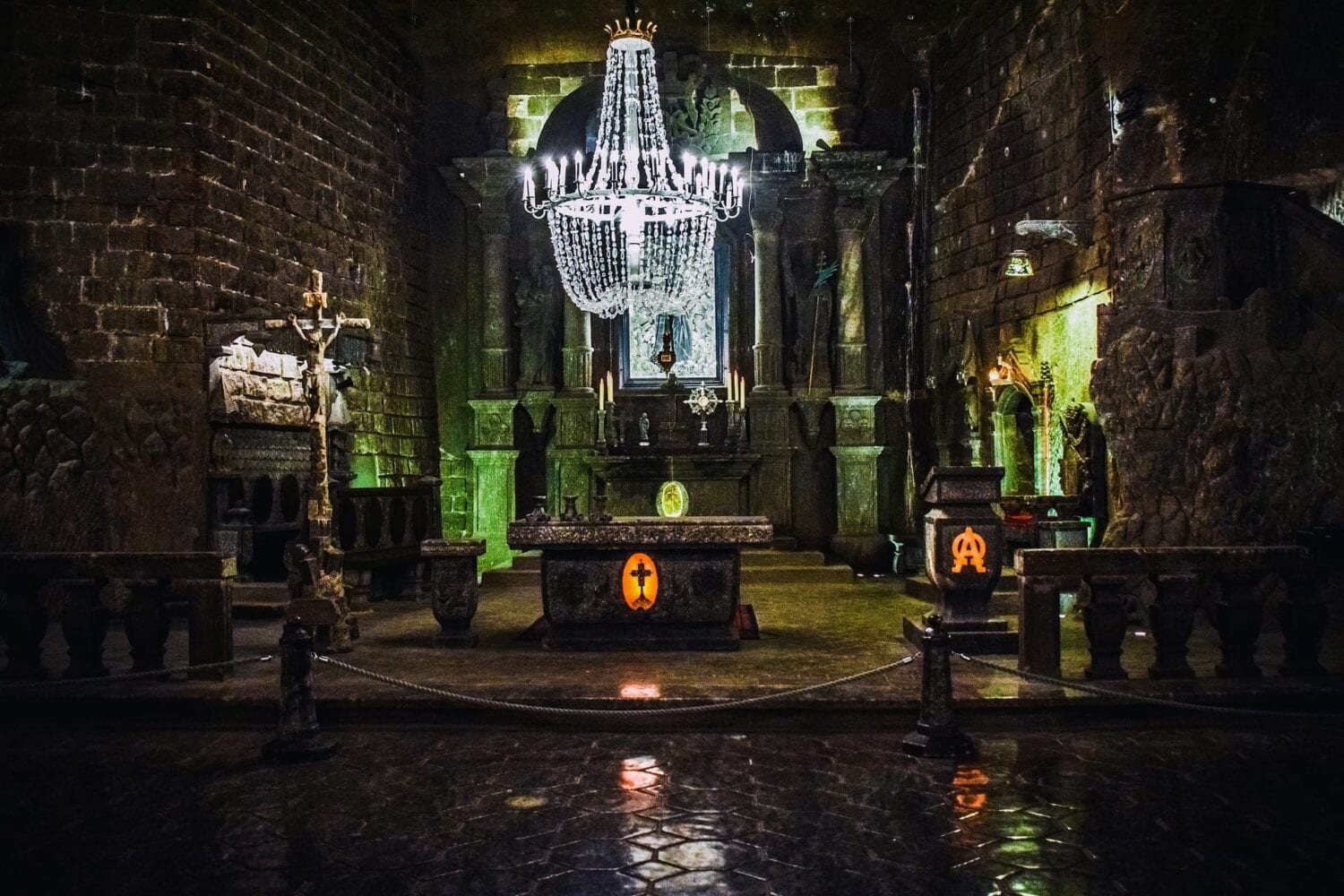
The Wieliczka Salt Mine is a UNESCO World Heritage site located around 14km southeast of Krakow and is one of Poland's most popular attractions, welcoming tourists since 1722. Wieliczka Salt Mine is a subterranean labyrinth of tunnels, shafts and chambers, underground saline lakes, chapels with altarpieces, majestic timber constructions and unique statues sculpted in rock salt. The size of the mine is staggering, it reaches a depth of 327m and extends via horizontal passages and chambers for over 287 km distributed over nine levels. Only a small part of the mine is open to the public.
Wieliczka Salt Mine tickets and tours
2. Historic Centre of Kraków
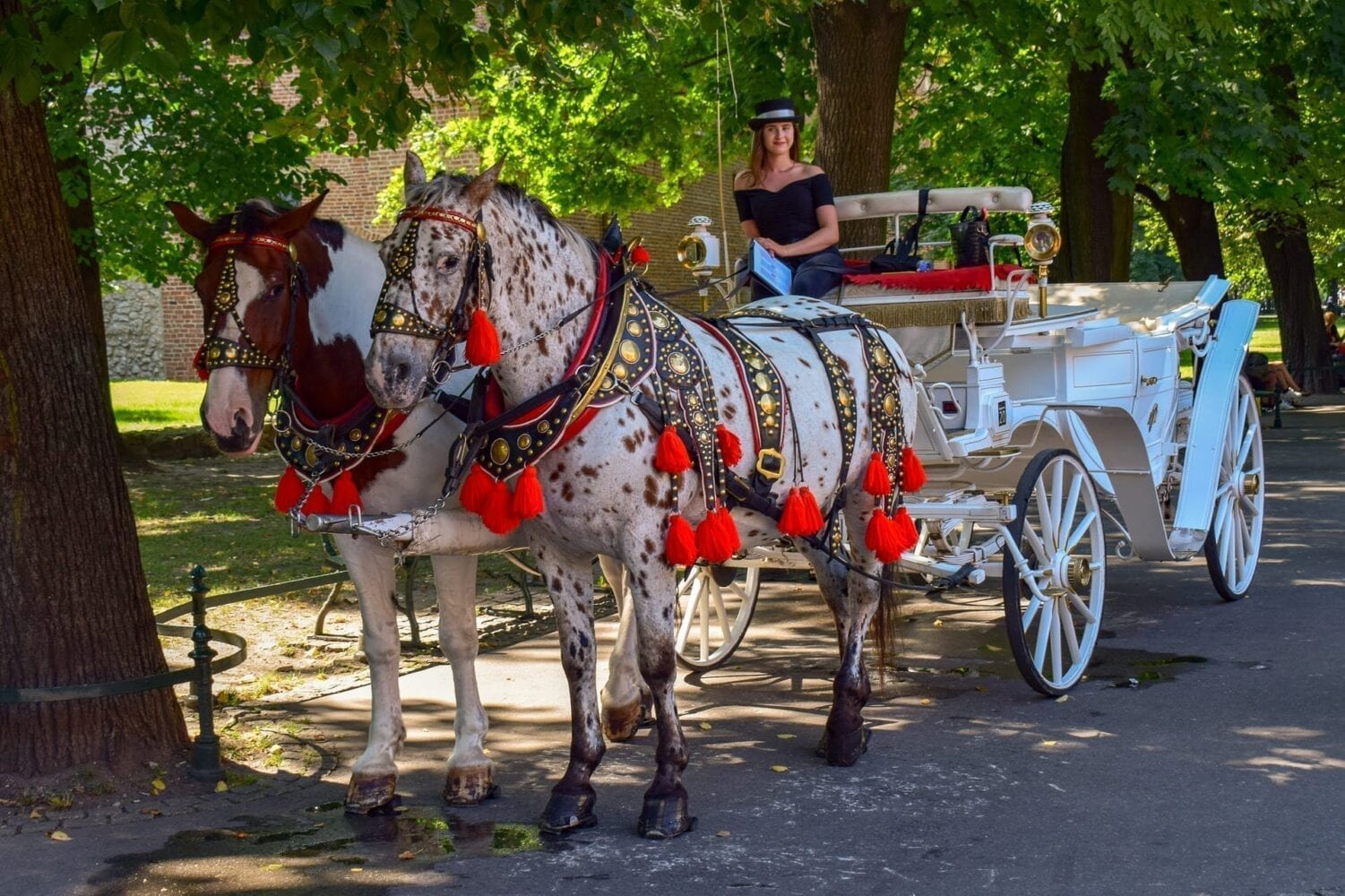
The historic centre of Krakow has been featured on UNESCO’s World Heritage List since 1978. Packed full of restaurants, museums, galleries and bars, the medieval layout of the Old Town has not changed for centuries. The heart and focal point of the historic centre of Krakow is its graceful main market square, the largest medieval town square of any European city. Most visitors to Krakow visit the market square with its Cloth Hall, the Church of the Holy Mary, Wawel Hill and its Royal Castle, Wawel Cathedral with its outstanding Renaissance chapel, the Barbican and St. Florian’s Gate.
Grand city tour through Krakow with Old Town and Jewish quarter
3. Wawel Royal Castle
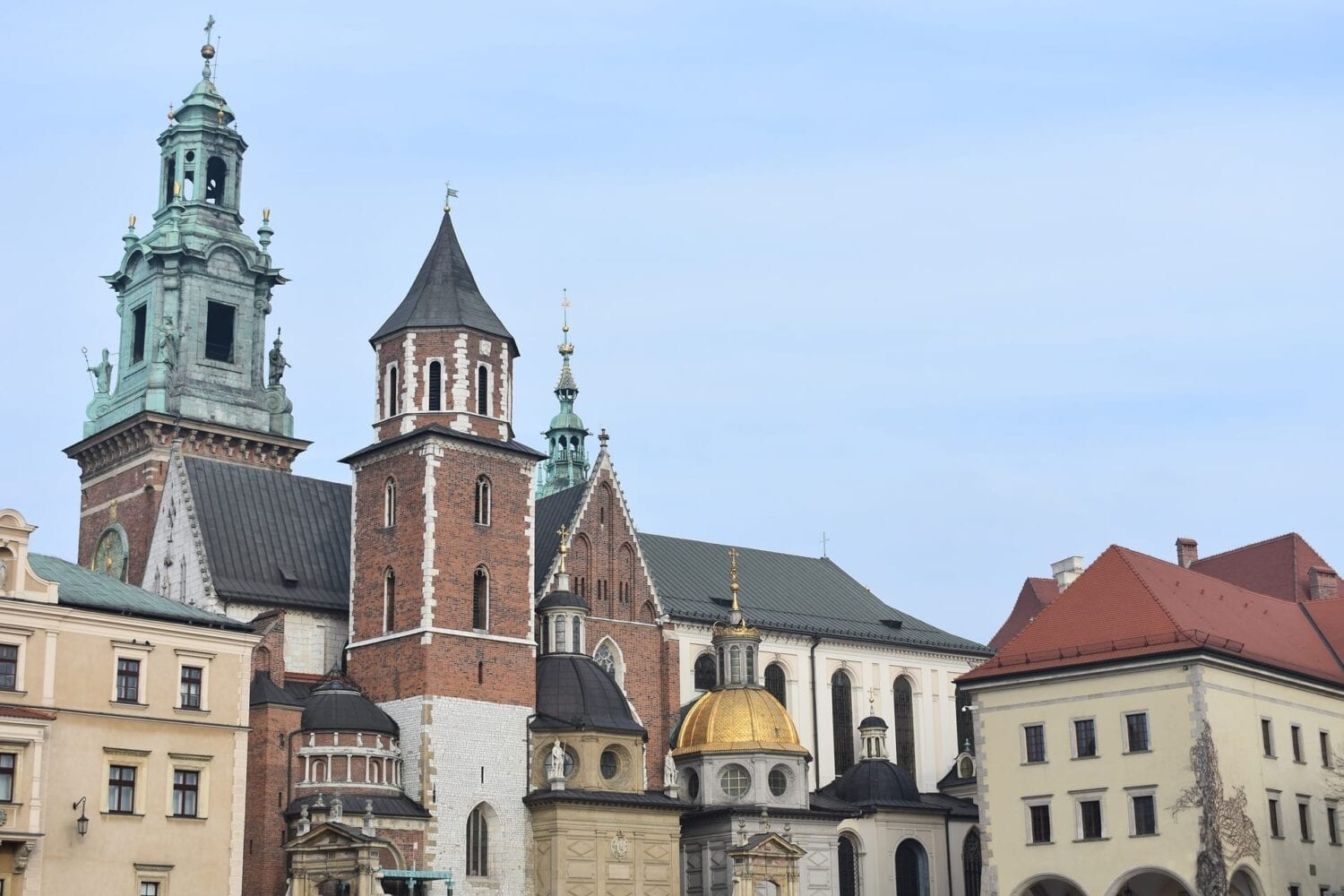
Wawel Royal Castle and the limestone Wawel Hill are extremely important historical and cultural sites containing one of the most important collection of buildings in Poland. Wawel was once the seat of Polish rulers, the residence of kings and the focal point of many Polish historical events. The hill is a symbol of the Polish nation and has witnessed some of the greatest moments in Polish history. Many Polish kings have been laid to rest below Wawel Cathedral. Located south of the old town and next to the Vistula River, Wawel Hill showcases an incredible assortment of architectural delights including Renaissance, Gothic and Romanesque designs. Wawel Royal Castle and the Cathedral are must-see attractions and a walk around the castle courtyards and open spaces are highly recommended.
Wawel Castle private guided tour
4. Auschwitz-Birkenau
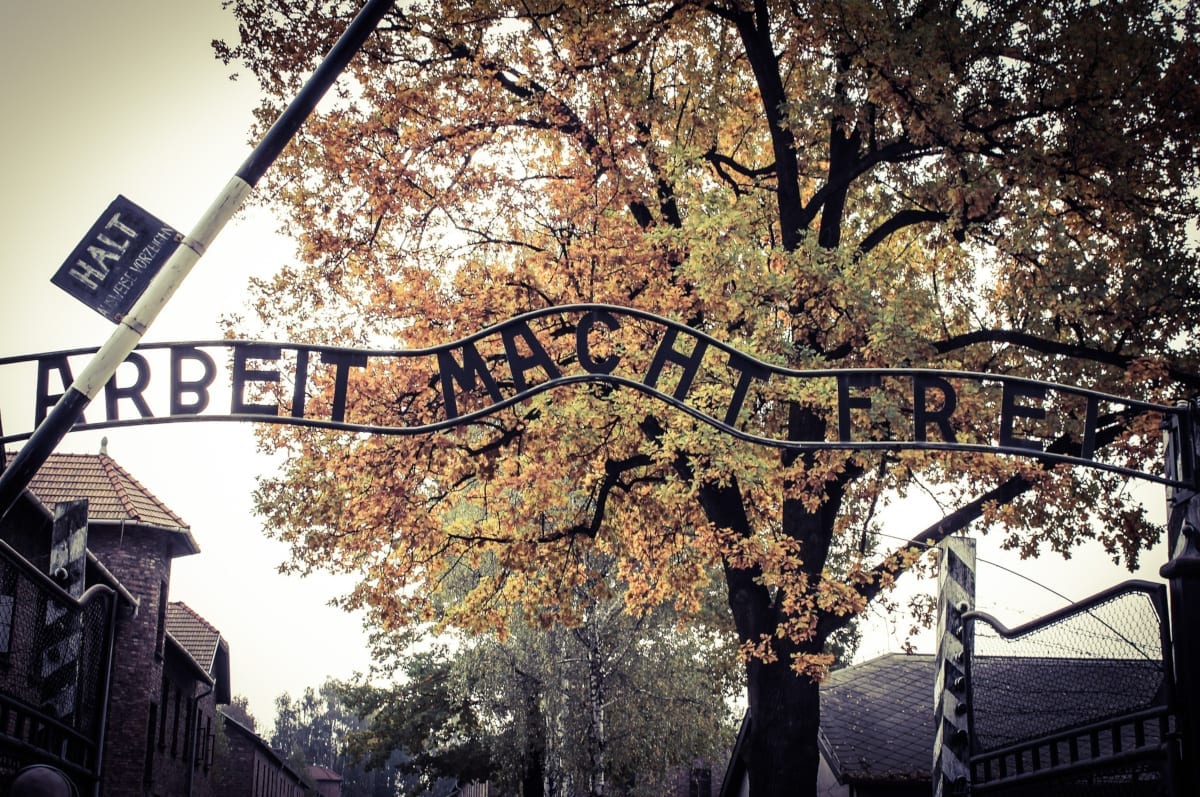
Auschwitz-Birkenau is synonymous with the Holocaust and the largest attempt at genocide in human history. More than a million Jews, and many Poles and Roma, were murdered here by German Nazis during WWII. Both sections of the camp, Auschwitz I and the much larger outlying Birkenau (Auschwitz II) have been preserved and are open to visitors. Everyone should visit Auschwitz at least once in their lives, it is a stern reminder of the horrors that human beings can inflict on each other and the only way to understand the extent and horror of the place and the atrocities that took place there.
Auschwitz-Birkenau Museum and Memorial guided tour from Krakow
5. Schindler's Factory
The story of Oskar Schindler is well-known since Steven Spielberg's film Schindler’s List; however, despite the name of the museum, it covers all aspects of the German occupation of Krakow from 1939 to 1945 through a series of well-organised, interactive exhibits. Take a tram to Plac Bohaterów Getta, then follow ul Kącik east under the railway line to find the museum. Learn the story of Krakow and its inhabitants, both Polish and Jewish, during the war. The exhibition, ‘Krakow under Nazi Occupation 1939-1945’, is in the former administrative building of Oskar Schindler’s Enamel Factory. An amazing venue, not to mention subject!
Schindler's Factory tours and tickets
6. Cloth Hall (Sukiennice)
The Krakow Cloth Hall dates to the Renaissance and is one of the city's most recognisable icons. Dominating the centre of the Main Market Square, this building was once the heart of Kraków’s medieval clothing trade. The hall was once a Gothic structure but rebuilt in the Renaissance style after a fire in 1555. On the ground floor, you’ll find craft and souvenir shops and on the upper floor is the Gallery of 19th-Century Polish Painting.
7. St Mary's Basilica
Saint Mary’s Basilica is a striking 14th century brick Gothic church adjacent to the Main Market Square in Kraków, best known simply as St Mary’s. The church is dominated by two towers of different heights and is famous for its wooden altarpiece carved by Veit Stoss, which took over 10 years to complete prior to it being consecrated in 1489. The altarpiece has a central panel and two pairs of side wings and is intricately carved in lime wood. It measures about 13m high and 11m wide and is the country's largest and most important piece of medieval art. On every hour, a trumpet signal called the Hejnał mariacki is played from the top of the taller of Saint Mary's two towers.
8. National Museum
The National Museum in Krakow is the largest museum in Poland and also the main branch of Poland’s National Museum. The collections of the museum number almost 780 000 objects, with the core of the collection being Polish art. You’ll find the museum on ul. Piłsudskiego, around 500, west of the Old Town.
9. Rynek Underground
Beneath the city of Krakow and housed within the underground corridors of the market square, you will find a museum, which showcases how the city looked and felt during the Middle Ages complete with stone roads with potholes made by cartwheels during the 13th century. It consists of an underground route through medieval market stalls and other long-forgotten chambers.
Krakow Main Market Square Underground Museum guided tour
10. Kościuszko Mound
Kościuszko Mound was erected in commemoration of the Polish military hero Tadeusz Kościuszko between 1820 and 1823. It stands 34m high and includes soil from both the Polish and American battlefields where Kościuszko fought. A serpentine path leads to the top with a panoramic view of the Vistula River and the city. The memorial is located in Zwierzyniec, 3km west of the Old Town.
FAQ
What is the best time to visit Krakow?
The best time to visit Krakow is during the spring (April-May) or fall (September-October) when the weather is mild and the crowds are smaller.
What are some must-see sights in Krakow?
Some must-see sights in Krakow include the Wawel Castle, the Main Market Square, St. Mary's Basilica, and the Kazimierz Jewish District.
How can I get around Krakow?
Krakow has an efficient public transportation system, including buses and trams, as well as the option to rent a bike or take a taxi. Walking is also a great way to explore the city.
Are there any good places to eat in Krakow?
Krakow is known for its traditional Polish cuisine, with many restaurants serving dishes such as pierogi, bigos, and kielbasa. There are also many international options available.
What is the currency in Krakow?
The currency in Krakow is the Polish zloty (PLN).
What is the language spoken in Krakow?
The official language spoken in Krakow is Polish. Many locals speak English, and you should be able to find people who speak German, Italian, Spanish and French in touristic places.
Are there any good places to shop in Krakow?
Krakow is known for its traditional markets and souvenir shops, where you can find items such as amber jewelry, hand-painted pottery, and hand-woven textiles. There are also many modern shopping centers and malls in the city.
Are there any good places to stay in Krakow?
Krakow has a wide range of accommodation options, from budget hostels to luxury hotels. It's best to book in advance in high seasons.
Are there any good festivals or events in Krakow?
Krakow is home to many festivals and events throughout the year, including the Krakow Film Festival, the Krakow Carnival, and the Jewish Culture Festival.
Are there any good day trips from Krakow?
Some popular day trips from Krakow include the Wieliczka Salt Mine, the Auschwitz-Birkenau Memorial and Museum, and the Tatra Mountains.
Adventure experiences Krakow
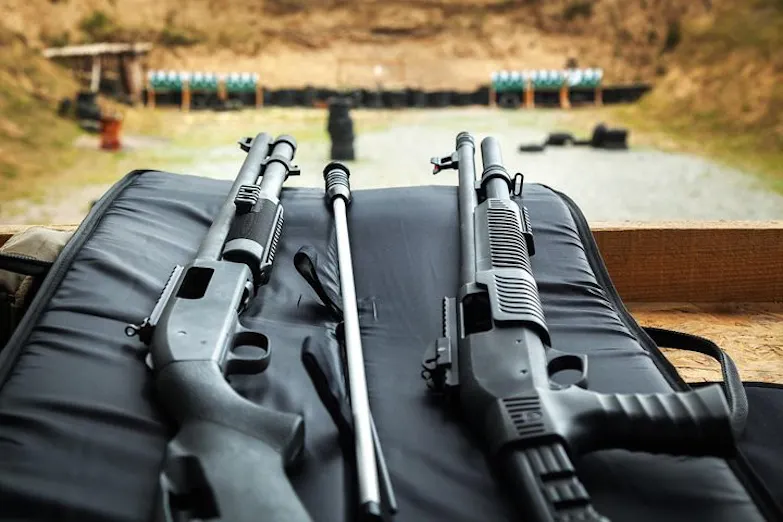
What to expect from this tour
Fuel up your adrenaline thirst with this special offer combining off-road quad biking and extreme shooting experience. This expedition includes shooting with specially selected guns from over 30 types of firearms like pistols, submachine guns, various AK rifles, shotguns, quad ride through rough terrain and to end your day roast some meat and sausages while taking a break by the bonfire.
To start the journey, a qualified instructor will get you briefly through safety instructions. Then, hop on your ATV and get through the off-road track in beautiful Kraków's outskirts landscape. After the ride, you can load out your emotions shooting some targets with a variety of firearms. At the end of the adventure, participate in a great BBQ with a lot of food, drinks and beer so you can enjoy your day off even more. This offer will pump you up with the adrenaline you need, and you will forget about the whole world and focus on having great fun in good company.
